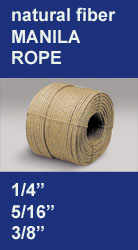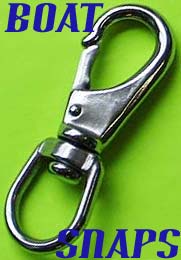
 Custom Search
|
| boat plans |
| canoe/kayak |
| electrical |
| epoxy/supplies |
| fasteners |
| gear |
| gift certificates |
| hardware |
| hatches/deckplates |
| media |
| paint/varnish |
| rope/line |
| rowing/sculling |
| sailmaking |
| sails |
| tools |
| join |
| home |
| indexes |
| classifieds |
| calendar |
| archives |
| about |
| links |
| Join Duckworks Get free newsletter CLICK HERE |
|
|
| September Treasure Chest |
Steam Boats
There is a great history of steam boats by Chapelle no less starting on page 107 of The national watercraft collection hosted by Hathitrust. The rest of the first part of the book is interesting, but it is harder to read because Chapelle is so detailed in his writing. It covers the use of boat models in relation to the history of the age of sail. Mike John Youtube TipMike John How to Make a Mold FlangeMike John Working with FoamBarry Long ask me about working with foam since we do a lot of it here at the shop, hoping for a simple answer, here it is and it's not too simple. You can get a strong light weight shape if you take some care. Dave Looking for a simple answer are you? That's like asking how long is a rope. And as we all know, nothing is simple. The white foam is cheap and it's open pores hold epoxy easily but the foam not very strong so you need several layers of glass to do much. We use this when making a boat hull that's going to be heavily glassed and totally sealed. Good timing, I'm in the process of making hatch covers using blue foam right now. The blue foam is much stronger, pretty much totally water proof but it's tight, smooth surface isn't too good for sticking glass to. The epoxy sticks just fine but it's easily pealed off along with a microscopic top layer of the foam. If you glass straight onto this foam you'll later notice hand size bubbles in the cloth where something has caused the glass to lift probably due to heat. Barry did his usual detailed research and discovered that the hard, dense blue or pink foam contains a gas inside from manufacture that may come out and cause these bubbles. The white less dense foam doesn't seem to have this problem. In order to prevent that from happening you need to roughen up the surface so the epoxy goes in deeper to hold better. We've tried sanding with rough sandpaper but this custom tool works best for me. You just go all over the surface and jab a lot of holes down into the foam; you can see how complicated it is. It goes real fast. After you sweep off the foam crumbs you could glass right on top but that would be way too easy and won't work. You'll just end up with a bunch of air holes under the glass. You have to pour some epoxy on and spread it all around and fill the holes.
Filling the holes sounds easy doesn't it, it's not. Epoxy is just thick enough to not want to go in the holes, it doesn't run in like water, you have to fool with it and force it in. Now if you really want to do a super duper job, and I know you do, you can take your hot air gun and go over the surface which will help the epoxy go in the holes and it will also roughen up the surface of the foam by melting it a little. If you don't pay attention you'll melt it a lot and them you'll be figuring out how to fill big holes in foam, not Bondo-it'll melt it. Now you can glass while it's still wet or wait till later. I like to do it while this coat is still wet so the cloth will go on smooth. If you do it later and have bumps for some reason you'll find that it's really hard to sand this stuff without screwing up. If you need to really bond the inside glass layer to the outside glass layer you can make holes or slots all the way through the foam so there's a solid connection.
You'll notice that this is 3/4 inch foam glued to a wooden frame. This is the glue I used for this application and for gluing foam to foam. Since I'm going to run the glass over the edge and down onto the wood I didn't need a strong bond so I just spread some on the edge of the frame and lit it dry. This stuff doesn't expand like PL Premium so it doesn't take much pressure to hold it in place. If I'm going to glue foam to wood and need a really strong bond I use PL Premium. Say you're attaching a trim piece of wood to the edge of the foam that's been glassed on both sides. I take a 1/4 inch drill and put a lot of holes in the edge of the foam, zip, zip, zip. Nothing fancy just get a bunch of holes. Then pack the holes with the PL Premium and stick the wood piece to the edge, securing however you can till it cures. Since this glue expands a little it really makes a super strong bond in the foam and it never lets go wood. You know by now that we use PL Premium for all of our gluing needs when we want a really strong bond, we like it even better than epoxy.
When you're building a light weight hull with foam it's better to pre glass the inside panels, glue them together, then smooth and glass the outside. Once they're glued together you can come back and fill and reinforce just like you do with wood. Stan made a Puddle Duck from all half inch foam and it weights only 40 pounds and it's still around. I think I've covered most of it, get some foam and practice a little. PodcastsI seem to be getting emails from folks here and there basically asking me for more details on what a podcast is. I put together a webpage for Heritage Boatworks that explains Podcasts and how to listen to them. Let me know if you have any questions. Also, for you wooden boat aficionados, make sure you check out my interview with Louis Sauzedde from Wickford, RI. The guy is a wooden boat legend! Jed BOOK REVIEW: Incredible Fishing Stories edited Shaun Morey: Workman Publishing, New York. Record-setting catches. Injuries large and small. Comedic sequences right out of Laurel & Hardy. Oddities. Epic battles. Fishing obsessions. Heroic rescues. Remarkable dangers skirted or overcome. Touching moments. Demented behavior - both human and piscine. This little book has it all - structured in 75 short vignettes and 212 pages. This is not Hemingway - nor even Zane Grey. More like remarkable tales, shared around the campfire by a widely experienced fishing guide, with a sprinkling of Patrick McManus style humor. How'd you like to fish somewhere where crocodiles jump off the tall banks, and knock your hat off on the way by? Not me - but it's fun to read about. Imagine what it'd be like to have a 'green' Marlin (not tired out enough to safely boat) decide to leap aboard and impale you. Have you ever caught three trophy bass on one cast? Suppose you were surf-casting, hooked a 180 pound tuna, and fought it all the way to shore, only to have the line snap at the last moment. Would you charge into the surf and spend 20 minutes dragging it to shore? How do you feel about venomous snakes joining you in the cockpit? Have you ever caught a billfish by hand? I live in steelhead country - but I can't imagine what it'd be like to catch a 42 pounder, especially at 8 years old! I've also caught a few sturgeon along the way - but a 468 # example of prehistoric deliciousness? That's just plain mind-boggling. This is not the sort of book one sits down and reads from cover to cover - though it's small enough, and interesting enough that one could, I suppose. Instead - to put it delicately - this is a great book for the porcelain library. Good short reading for the fisherfolk... and for anyone else who enjoys a fun story. I can also see it on the bookshelf of a cabin or fishing camp. There's enough variety for almost anyone to enjoy, and it doesn't get stale. I've already re-read it twice myself in the few weeks I've had it. Inexpensive and accessible... I recommend it. I enjoyed it enough that I've been inspired to track down more of Mr. Morey's writing, and am glad I did. David Graybeal |
To comment on Duckworks articles, please visit one of the following:
|
 |









